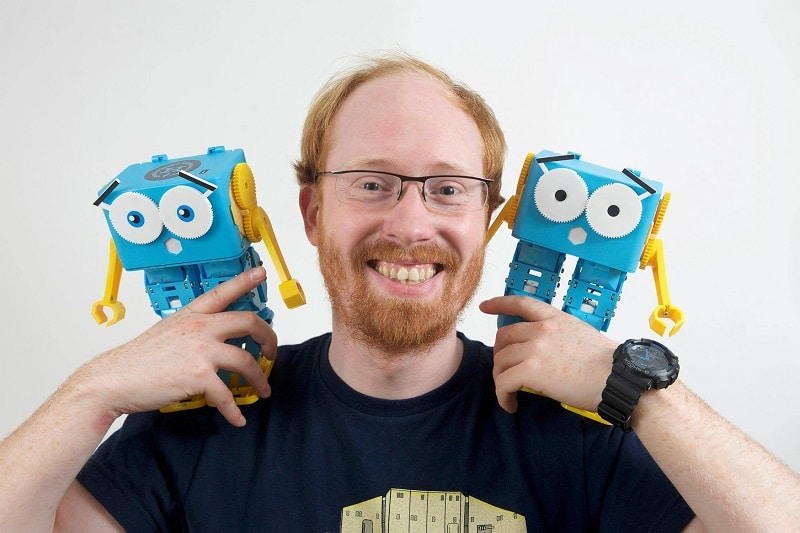April 28, 2021
In this interview focused on STEM and robotics, Dr Sandy Enoch explains what inspired him to create an educational robot called Marty

Sandy please can you introduce yourself and your current role
I’m Dr Sandy Enoch, CEO of Edinburgh-based robotics firm, Robotical, and inventor of a small humanoid robot called Marty that is used across the world to help children, and anyone with an interest in robotics, to get to grips with coding and engineering.
What inspired you to launch Robotical?
From a young age I’d always dreamed of a career in a space agency. A close second to that was working in robotics and that’s the path I followed, first completing my undergrad at Heriot Watt University and then PhD at Edinburgh University, specialising in walking robots. During those years I was involved in a lot of outreach work, volunteering at events and science fairs, and dealing with some incredibly advanced tech – robots that were about as affordable as a spaceship. But they always drew a crowd, such is the general fascination with them, and so I guess that’s when I thought to myself that I could create a walking robot that would be both accessible for beginners and sophisticated enough to handle advanced coding and robotics, but not out of reach financially for individuals or schools. My young niece at the time was learning to code and so she and her peers were really front of mind when it came to coming up with a design that would be fun and appealing. A lot of people see STEM subjects as very dry and not particularly creative, which is really not the case. With Marty, users can interact and engage with a physical product, seeing whatever they’ve put on the screen acted out by a robot. It helps children in particular see that real results come from seemingly abstract concepts and, because Marty is deliberately built to resemble a human – it can walk, kick, turn and has a really expressive face – they’re even more curious and keen to form a connection.
I developed a prototype for Marty back in 2015 and was fortunate enough to meet our lead investor at a coding club I was demo-ing Marty at. From there, we raised finance through awards/grants and crowdfund campaigns to bring V1 into production and build a team.
RECOMMENDED: https://global-edtech.com/category/community/
Do you think there is still a shortage in STEM/STEAM skills in Scotland?
It makes for pretty grim reading to know that the skills shortage in STEM costs the UK economy £1.5bn a year and that seven in ten employers are unable to find staff with the required skills. If we are to address this skills crisis, it starts at home and at school. Parents and teachers are major influencers for our young people. To change preconceptions of STEM and foster a genuine interest in young people for these subjects, parents should be better informed about the huge diversity in career prospects in STEM, teachers should receive training to help them deliver STEM subjects more confidently and more funding should be made available to schools to buy necessary STEM resources.
Did you expect Marty the Robot to achieve as much success as it did?
When I think that there are Martys being used in over 60 countries worldwide and, in the UK, in over 200 schools, I feel really proud of what we’ve achieved.
A particular highlight for me was seeing Marty V1 in a robot exhibition at the National Museum of Scotland but I never tire of the reaction Marty gets when children unbox it and start interacting with it.
Are you working on any new STEM and robotics projects or products that you can reveal at this time?
We never stop coming up with new ideas and features to make Marty literally ‘all singing, all dancing’. Our latest model (Marty V2) includes USB and Bluetooth connectivity, obstacle, noise and colour sensors, a built-in speaker, position and force-sensing motors and screen-free coding. We’re in the final stages of developing resources so that Marty can be used with Raspberry Pi and we’re always updating learning and support materials to make sure our lesson plans are as interesting as possible, and straightforward for teachers to follow.
The big goal for me is to inspire as many young people as possible to get interested in technology, and how they can use it to change the world for good. I think we’ll see a lot more change in our lifetimes, and it’s down to the young people of today to steer things in the right direction.













